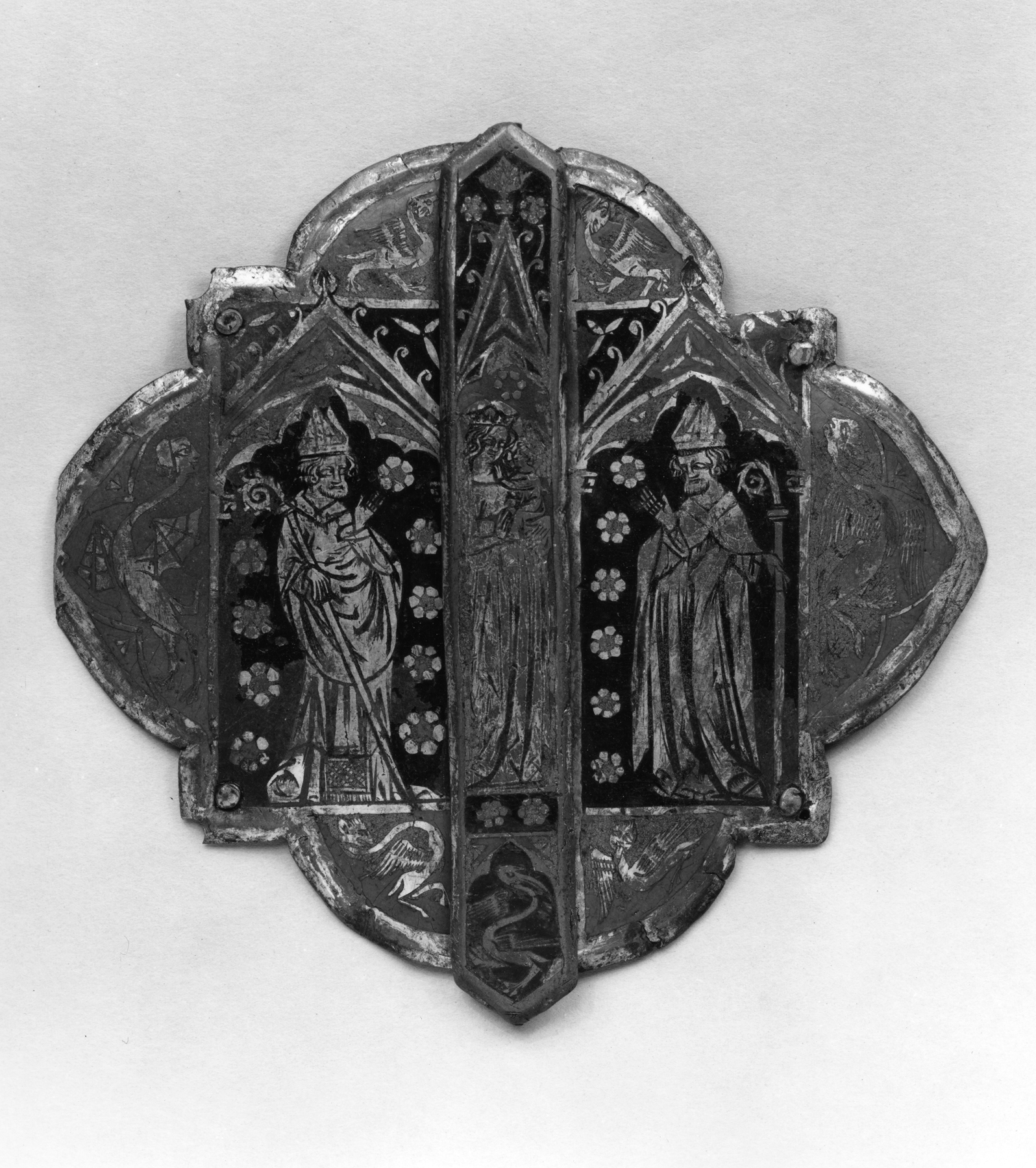Morse (Clasp) for Ecclesiastical Vestments
The morse is of quatrefoil form, with two bishops beneath trefoil arches shown against a field of blue enamel with copper flowers with red enamel centers. The bishops flank the Virgin and Child on the central narrow plate which swivels on the connecting pin. The bishops are surrounded by a series of monsters and grotesques in copper reverse against a red ground. Four cut rivets at the corners were used for attachment and most have been capped with cabochon jewels or other ornaments which have been lost.
Provenance
Provenance (from the French provenir, 'to come from/forth') is the chronology of the ownership, custody, or location of a historical object. Learn more about provenance at the Walters.
Collections of P. Soltykoff Sale, Paris, April 8-May 1, 1861, lot 212; F. Spitzer Sale, Paris, 1893, lot 281, pl. IX; Collection of Chalandon, Lyon [date and mode of acquisition unknown]; Henri Daguerre, Paris, [date of acquisition unknown] by purchase; Henry Walters, Baltimore, 1927, by purchase; Walters Art Museum, 1931, by bequest.
Exhibitions
| 1979-1980 | Jewelry - Ancient to Modern. The Walters Art Gallery, Baltimore. |
Conservation
| Date | Description | Narrative |
|---|---|---|
| 12/10/1958 | Treatment | cleaned |
Geographies
France, Paris (Place of Origin)
Measurements
H: 6 3/16 x W: 6 5/16 in. (15.7 x 16.1 cm)
Credit Line
Acquired by Henry Walters, 1927
Location in Museum
Not on view
Accession Number
In libraries, galleries, museums, and archives, an accession number is a unique identifier assigned to each object in the collection.
In libraries, galleries, museums, and archives, an accession number is a unique identifier assigned to each object in the collection.
44.251


